Diesporte Data – National Diagnosis of Sport – challenges and possibilities of Institutional action
By Maria Luiza Souza Dias and Ana Paula Feitosa
This article also appears in ICSSPE’s Bulletin no. 70/2016 – see further reference at the bottom of the page.
Along its trajectory of nearly 70 years, Sesc - Serviço Social do Comércio (Social Service of Commerce) - has been distinguished by its action in different areas of human achievement. Its mission is directed to promoting, encouraging and welcoming achievements of educational character in artistic-cultural expressions, physical development, education for sustainability and cultural diversity, social tourism, nutrition and safe feeding, health and dentistry, among others, aiming to offer a wide range of choices for individuals of most varied age groups, respecting their needs and individualities.
Sesc is an Institution of private, non-profit character, operating in all Brazilian States and the Federal District. It was created in the post-war context, in 1946, as result of the initiative of entrepreneurs in the commerce, services and tourism sectors, which took the responsibility of its funding and management, under auditing/follow-up of public federal agencies. The Institution has the mission to collaborate to improve the quality of life of workers in these sectors, their dependents and the community in general.
To implement this broad policy, Sesc upholds a large technical team working in its extensive range of facilities comprising cultural and sportive centers distributed throughout different Brazilian regions. Those centers are equipped with living areas, gymnasiums, swimming pools, gymnastics halls and sports courts as well as spaces for exhibitions, theaters, libraries, feeding areas, among other spaces of multiple use.
The permanent and non-formal education is the basis of the institutional action with the purpose of stimulating the autonomy of individuals and communities, the exercise of citizenship, the interaction and the contact with expressions and different ways of thinking, acting and feeling.
In the year 2012, a partnership between Sesc and the Brazilian Ministry of Sport took place to conduct a Campaign to establish a network of partners that could work together to increase the number of Brazilians practicing sports and physical activities, expecting to build a more active country, free from sedentariness, as we will see further down.
Physical – Sportive Development at Sesc
Sesc recognizes sport and physical activities as elements of the people’s culture, a potential source of apprenticeship and personal development, interpretation of values and contents for cognizance and change of daily habits and behaviors (SESC, Sao Paulo, 2016, p. 100).
From that understanding, the institutional actions provide ample possibilities for enjoying sports and physical activities in a permanent search for the consciousness about the importance of leisure practices in everyday life. All actions encourage the participant autonomy, spreading values such as integration, respect for diversity and social inclusion, seeking to boost sociability, learning and development of corporal abilities, in such a way that brings to the public a unique experience of well-being and quality of life.
Such experiments seek the education for movement through a new and wide universe of references, from a transforming formative intention that provokes new readings and learnings; contributing to the resignification of values and lifestyles, and above all, to the formation of individuals better prepared for the full exercise of citizenship.
In a world governed by mechanization and growth of sedentary levels, one of the main institutional concerns is to encourage trials that enable the discovery of adequate and pleasurable activity inserted in the individual daily agenda, searching to build connections and interfaces with aspects that interfere in personal choices and experiences and inspire institutional actions and programs.
The Physical and Sportive Development attends approximately 1.500.000 people/ month, with an average of 50.000 persons attended daily, whether in permanent courses, in initiation and improvement, sports festivals, tournaments and championships in different modalities, or in special events and campaigns.
In São Paulo State, Sesc registers nearly 70 thousand people enrolled in permanent courses, namely: Multifunctional Gymnastics Program (40%), Aquatic Practices Program (28%), Sesc Program of Sports (17%), Corporal Practices (5%) and other courses (10%). Among the participants, 69% are women and 31% men. (SESC, Sao Paulo, 2015).
To support those actions, Sesc has prized studies and researches related to physical interests of the public as indispensable portion to understand the general culture of the community, the qualification needs and the improvements offered in services. In research conducted in 2013 in São Paulo State entitled "Hábitos Culturais dos Paulistas” (Cultural Habits of Paulistas), under the coordination of J. Leiva Culture and Sport and run by Datafolha, many questions were specific about Sesc. Amid 58% of respondents who know, attend or have already been at least once at the Institution premises, approximately 58% confirmed to enjoy the practice of sports and physical activities at Sesc, showing significant satisfaction with the activities experienced (SESC, Sao Paulo, 2016, p. 37).
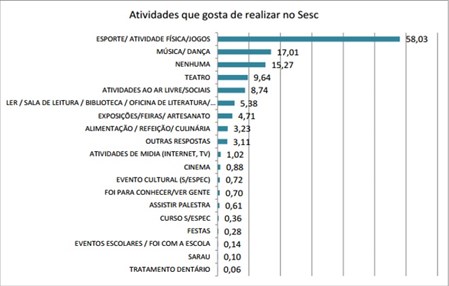
Figure 01: Favorite activities at Sesc (Source: http://www.jleiva.com.br/pesquisa_sp/).
Sesc and the campaigns to encourage the Practice of Sports and Physical Activities
For decades, Sesc has maintained a clear understanding about the needs to expand its actions in the physical-sportive area through campaigns that could raise consciousness amid the entire population. Challenge Day, the result of the engagement of Sesc with international and national institutions of Sport for All, in particular a partnership with TAFISA, was one of the first institutional actions with this purpose. Held annually, Challenge Day joints thousands of cities in the “The Americas” with the objective of endorsing, disseminating and promoting the development of the culture of movement in benefit of citizens’ health and welfare.
To amplify such actions Sesc São Paulo launched, in 1996, the campaign Sesc Verão (Sesc Summer) held during the months of January and February with the objective to increase the individuals’ perception about the importance of the practice of sport and physical activity during leisure time, motivating the participants to adopt this practice in their daily life.
Following extremely good results for these campaigns, in 2011, Sesc proposed the creation of Move Brasil (http://www.movebrasil.org.br/), a campaign inspired by actions developed in Europe by ISCA (International Sport and Culture Association), in special the Now We Move (http://www.nowwemove.com/).
Among the founders of Move Brasil are Sesc, ISCA, ACM/YMCA (Young Men Christian Association), the Brazilian Ministry of Sport and Ministry of Health, APO (Olympic Public Authority) and Atletas pelo Brasil (Athletes for Brazil).
From then on, all Sesc proposals in the area of Physical - Sportive Development are part of the set of actions of Move Brasil Campaign. The philosophy of the work is to spread and democratize the various possibilities for physical and sports practices and stimulate and growth the number of practitioners with a goal fixed until 2016.
Sesc, the Ministry of Sport and the accomplishment of Diesporte
The Ministry of Sport, in its diverse scope of activities and proposals, have pursued to expand the universalization and democratization of access to the practice of sport in Brazil, as a fundamental principle, and since then, has deployed socio sportive programs. Among the programs we mention Program Segundo Tempo (Program Second Half), PELC – Programa Esporte e Lazer na Cidade (Program Sport and Leisure in the City), Vida Saudável (Healthy Living) and Luta pela Cidadania (Struggle for Citizenship).
The discussions on the sports scene in Brazil expanded and became a movement heavily influenced by the National Conferences of Sport, held between 2004 and 2006. The conferences identified needs to gather institutions in various segments of sport, public entities, private and the third sector, on articulated and integrated form to discuss the development of sports in Brazil, paving also the way for new legislation.
Sesc and Ministry of Sports started the Campaign Move Brazil from the desire to create a more active country. It would first be necessary to identify the degree of development of sport in Brazil, aiming at the implementation of evaluation policies to this area, at the national level, that would recognize and enhance sports practices as generators of economic and social development (DIESPORTE/SESC, 2015, p. 01).
This was the starting of the process conception, the reference researches, pilot studies and fundraising for projects via FINEP (Financiadora de Estudos e Projetos) and FAPESP (Fundação de Apoio à Pesquisa e Extensão) the conceptualization of the National Sport Diagnostic, definition of questionnaire and other tools to carry on analyses and reports.
With the institutional purpose of consolidating the National Sport Policy and considering the constitutional directive that indorses the practice of sport as a social right, the DIESPORTE - National Diagnostic of Sport - was ran in network, between the years 2011 and 2014.
The research had the support and participation of six Federal Institutions of Higher Education, encompassing all regions of Brazil: UFBA (Federal University of Bahia), UFRGS (Federal University of Rio Grande do Sul), UFRJ (Federal University of Rio de Janeiro), UFG (Federal University of Goiás), UFAM (Federal University of Amazonas), and UFS (Federal University of Sergipe); the UFBA was the executing institution.
In the search of answers that could allow a better comprehensive analysis about the Brazilian sports scene, it was suggested the use of four fundamental variables, namely:
a) The practitioner or not practitioner of Sport and Physical Activity;
b) Sports Financing;
c) Sports Legislation;
d) Sports Infrastructure.
The survey was structured according to methodologies that enable a systematic reapplication, permitting the creation of a platform of basic statistics about the sport in Brazil that could result in a data culture that could guide public policies at national level.
Data collection took place in all Brazilian States in the year 2013, with 8,902 interviews, reasoned with basis on a projection of the Brazilian population of approximately 146,748,000 Brazilians, by region, gender and age groups, made by IBGE for the year 2013, referring to the population between 14 and 75 years.
In 2015, the Ministry of Sport and partner institutions, released the data of the variable: “Practitioner or not practitioner of sports and physical activities.”
In general, the results showed that 45.9% of Brazilians are sedentary, 28.5% are practitioners of physical activities and 25.6% practice sports.
Among other data, the research shows the preferences, motivations and the reasons for the abandonment of the practice of sports and physical activities and the most used places for this purpose, according to the following charts and spreadsheets (www.esporte.gov.br/diesporte).
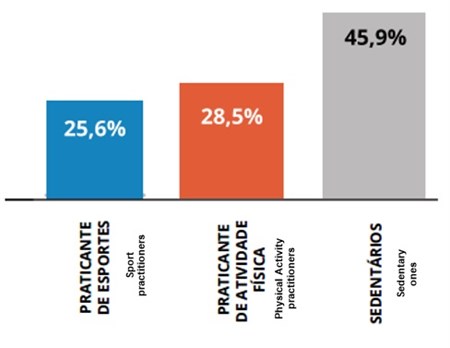
Figure 2: Practitioner of sport and physical activity in Brazil - (chart 10 – source: http://www.esporte.gov.br/diesporte/7.php).
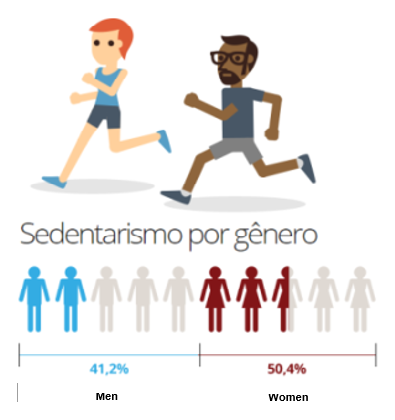
Figure 3: Sedentariness by gender (Source: http://www.esporte.gov.br/diesporte/2.html).
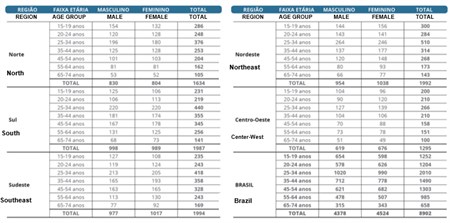
Figure 4: Distribution of sampling by regions, age groupe and gender (Chart 03 – source: http://www.esporte.gov.br/diesporte/7.php).

Figure 5: Sedentariness by age group (chart 03 - source http://www.esporte.gov.br/diesporte/7.php).

Figure 6: Scholarship level of practicioner. Scholaship is an indetermined variable, once it did not comprise the sampling stratum. (chart 183 - source http://www.esporte.gov.br/diesporte/7.php).

Figure 7: Information about where the sportive practice takes place, and Space of the Physical Activities practice (Source: http://www.esporte.gov.br/diesporte/2.html).

Figure 8: Withdrawing by age group – (chart 05 - source http://www.esporte.gov.br/diesporte/7.php).

Figure 9: Withdrawing by gender (Source: http://www.esporte.gov.br/diesporte/2.html).
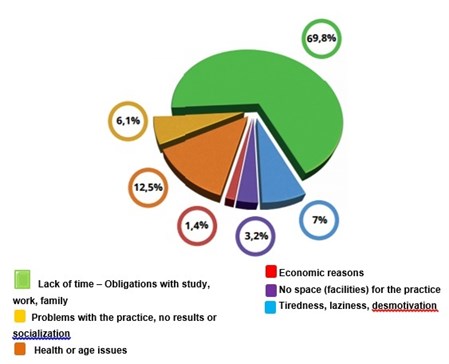
Figure 10: Reasons for withdrawing (chart 06 - source http://www.esporte.gov.br/diesporte/7.php).
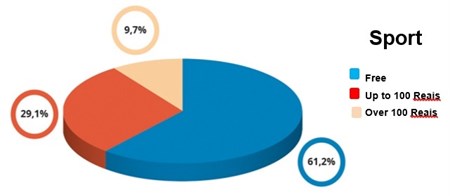
Figure 11: Amount spent with the practice of sport (chart 15 – source: http://www.esporte.gov.br/diesporte/7.php).
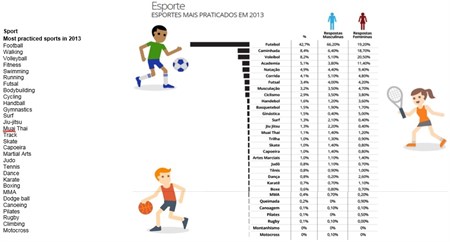
Figure 13: Most practiced sports in 2013 (Source: http://www.esporte.gov.br/diesporte/2.html).
Sesc eye on Diesporte data and the targeting of its actions from the research outcomes
From 2014, with the knowledge of the first Diesporte results not yet released, a most recent data started to be used as guideline for the institutional action plan.
We noted that 45.9% of the population declared to be sedentary and the interruption or abandonment of practice occurs in all ages, with extremely relevant indices; 26.8% give up until the age of 15; 45% between 16 and 24 years, and 18% from 25 and 34 years. So, among all people who declared to abandon the practice of sports and physical activity, 89,8% do it until reaching the age of 34.
This information signaled the need to reinforce and reevaluate the themes, slogans and the messages being communicated in a few institutional actions.
Rendering this bias, Sesc Verão 2015 (Sesc Summer 2015) proposed a broad program of activities aimed to the different styles and age groups from the slogan Esporte tem idade – todas (Sport has ages – all) making it clear that the goal and the message to be communicated was seeking a rapprochement with all persons, of all ages. The message also emphasized all activities of Challenge Day 2015.
Other significant data for the strengthening of actions already carried out refers to the need to expand the practice of sports and to decrease the Brazilian football monoculture that represented the most practiced sport in 2013, with 42.7% of the population involved in this activity, while the volleyball was second in the standings, with 8.2%.
This fact marked all institutional efforts to spread the sport culture throughout Sesc’s 70 years. The search to recover aspects and formative fundaments of sport in its various modalities and dimensions: knowledge, practice and performance. Therefore, in 2016, the Campaign Sesc Verão presented the theme “Qual o esporte que te move?” (Which sport moves you?) with the backdrop of a programming designed with modalities included in the Olympic and Paralympic Games in Rio de Janeiro, and those in Tokyo 2020.
With great media influence, Sesc Verão 2016 (Sesc Summer Campaign) reached its purpose by enabling experimentation and the knowledge of sports modalities present in one of the main sports events in the world, and represent a set of modalities unknown by great part of Brazilian population.
The practice of other sports, either those present in the media or the least known, present rates far less relevant than football and lead to the interpretation that the access to sport is not diversified, so the democratization of access becomes indispensable to change the framework of sedentary lifestyle in Brazil.
If on one hand, the knowledge of the Diesporte data provoked questioning, restructuring and redirecting campaigns accomplished along two decades, on the other, it inspired the construction of new proposals, new communication platforms, and means that can boost new actions.
In 2015, Move Brasil (Move Brasil Campaign) launched a special action #MoveMulher (Move Woman) taking into consideration that an average of 50, 4% of women are sedentary (declared not having joined any sports or physical activity in the year 2013). Yet, 58.5% of them claimed the lack of time as the main reason for not practicing; in addition to the high level of early withdrawal of sports and physical activities, (34.8% of women and 19.3% of men discontinue their practice up to 15 years of age).
At the same time, in the year 2015 the campaigns had great impact among the female public on social networks, an important communication channel with women in different ages and social levels. Thus, the first edition of #MoveMulher, held in March 2015, featured several testimonial videos, with the participation of students, athletes, journalists, educators, managers, bloggers, artists, leaders and national personalities who shared the importance of sport in their lives. In 2016, a special programming grid was developed to allow experimentation and expansion of access to sports and corporal practices (chats, exhibitions, open classes, tournaments, festivals, presentations, experiences and sports clinics).
The #MoveMulher represents one of the most effective actions of the campaign Move Brasil, held in the month of March, moment of great potential for this thematic approach and women's awareness due to the International Woman's Day. Having engaged spokespersons of various areas, most of them joining the cause spontaneously, taking the message, inspiring and motivating, many women included sport and physical activity in their daily schedule.
With the great impact of #MoveMulher, other initiatives were developed such as #MeuDesafioEsportivo and #EuMeMovo, such as actions of Challenge Day and the Week Move Brasil 2015, respectively. Actions that made it possible to maintain social networks active and engaged for many uninterrupted months.
Consequently, at every new action, significant results are noticed which encourage the search for more data, more and deeper analysis of contexts to enable the creation of proposals that can comprise the set of institutional actions. And in that sense, other Diesporte data drew the attention, showing that lower the level of schooling, the higher the level of non-practice.
It was considered, then, the need to create three action lines for the campaign Move Brasil: School, Community and Corporation. At Schools, the campaign provides experiences to magnify the students’ motor repertoire and training courses for teachers. On the Community axis, there is a large stimulus to the occupation of public spaces, parks and courts, in all regions of the country, to offer democratization of access to different sports and corporal practices to the scholars’ families and the whole community. In addition, the Corporation action line aims at bringing the practice to the work environment.
Many companies have joined the campaign proposal. To mention an example, the Viação Cometa S.A. (company providing transportation services on highway buses in southeastern Brazil), created a group of introduction to running through the Program Move Brasil Corridas. The group also benefited with incentives such and nonpayment of registration fee in race circuits (http: www.viacaocometa.com.brwebptempresahistoricoindex.htm).
Considering all data presented and adding to them the information that:
- 57.3% of the respondents practice physical activities in open spaces with no facilities,
- 78.2% of people who practice physical activities and 61.2% who practice sports, do it free of charge, without investment or financial resources.
Sesc embarked on communication technology, a new niche of expertise not only to the campaign but for Sesc: the name is Move.Me.
Move.Me is a training program developed by Sesc race technical staff, designed for beginners to complete in only 9 weeks, free and applied on Android platform. Released in September 2015, the program reached over 8.000 downloads and allowed hundreds of people interested in leaving the sedentary lifestyle to start a race training, simple and safe, once the app offers tips and technical guidance in audio, practice management tools during workout (length, covered distance, speed, etc.) and counts with virtual guidance from Sesc technical team available by the community Health Unlocked (https://healthunlocked.com/movebrasil-corridas).
As a technological tool it enhances access and democratization of sport, expanding the service to the big part of the population that owns a mobile Smartphone device. This process eliminated physical barriers to the practice and may be used in any city in the country, without the need for specific physical location, and meet the preference of Brazilians about the place of practice.
Therefore, the analyses allow us to perceive new paths, propose changes, validate hits, but most of all, continuously search innovative actions and ways, to reach the main objective of the institutional campaigns: Making Brazil a more active country.
Conclusion
In the current Brazilian context – the so-called Decade of Sport in Brazil - all eyes turn to the sports area. It became necessary and advisable to carry out the Diesporte 2015, the first population based sport diagnosis in the country, a tool able to broaden the understanding of the national sports scenario development.
From the knowledge and analysis of the information received, Sesc uses the data in moments of discussion and planning, in order to add subsidies that can guide the implementation and expansion of actions and programs promoted for the physical and sportive development.
Comprehensively, the in-depth analyses of these data have enabled the validation of many actions already carried out by Sesc; supported the establishment of better strategies for actions communication and provoked reflections that resulted in new demands and institutional projects.
Sesc has developed and encouraged studies and researches that can generate a better understanding of culture, with the aim of continuing the cyclical movement of institutional inspiration. Resources and knowledge are invested, in the constant search for the qualification of the work developed, through the introduction of best technologies, systems and processes. Such performance can generate the training of technical staff, the modernization of actions and infrastructure, to benefit the permanent construction of innovative proposals for social development.
More information
If you want to continue reading, Play the Game readers get exclusive free access by first logging into ICCSPE’s Membership area at https://www.icsspe.org/user/login .
Please enter username: CUHK and password: 9unwtVMh. This log-in will be valid until October 31, 2016.
The latest Bulletin is offered in the drop-down menu under “Membership”.
References:
Brazilian Association of Electric and Electronic Industry - Abinee. (2015). Brazil. Available at http://www.abinee.org.br/noticias/rel2015.htm. Access on 24/03/2016.
Diesporte/Sesc. (2015). Final Report – The profile of someone who practices or does not practice Sports and Physical Activity in Brazilian Population. Final Report. Federal University of Sergipe. Aracajú, SE.
Ministry of Sport. (2015). Brazil. Data, charts and worksheets of Diesporte – National Diagnosis of Sport. Information available at: http://www.esporte.gov.br/diesporte/2.html and http://www.esporte.gov.br/diesporte/7.php. Access on 03/03/2016.
Ministry of Sport. Brazil. Social Programs. Information available at http://www.esporte.gov.br/index.php/institucional/esporte-educacao-lazer-e-inclusao-social/esporte-e-lazer-da-cidade. Access on 14/03/2016.
Social Service of Commerce - Sesc. (2012). Leisure Policies. National Department, Rio de Janeiro, RJ.
Social Service of Commerce - Sesc. (2016). Anual Program 2016. Regional Department of São Paulo State, SP. Available at
http://www.intranet.sescsp.org.br/sesc/meuportal/index.cfm. Access on 03/03/2016.
Social Service of Commerce - Sesc. (2015). Regional Department of São Paulo State, SP. Data informed by the reports from the System of Courses Management (software of institutional management).





